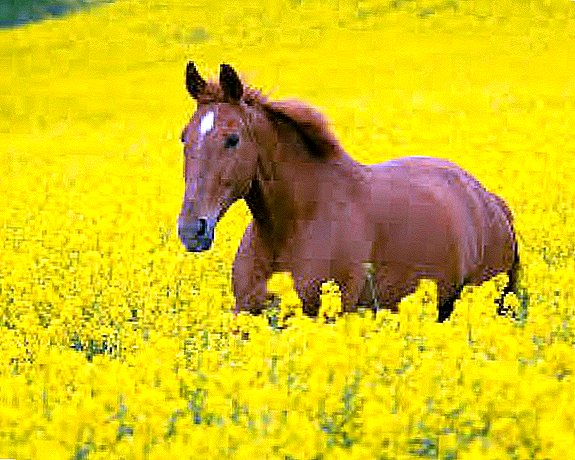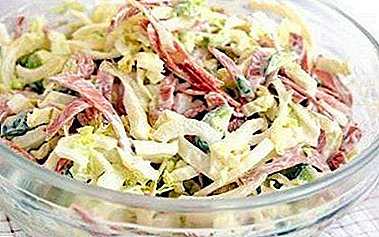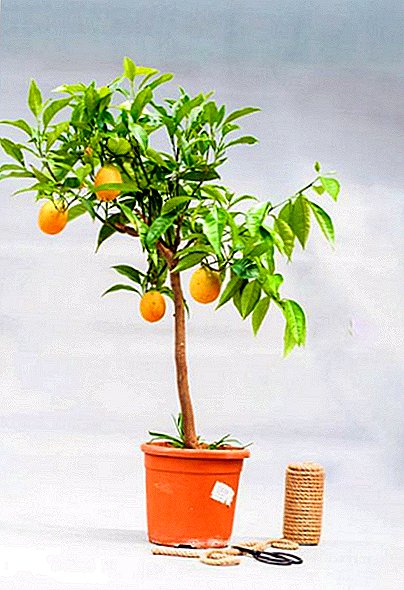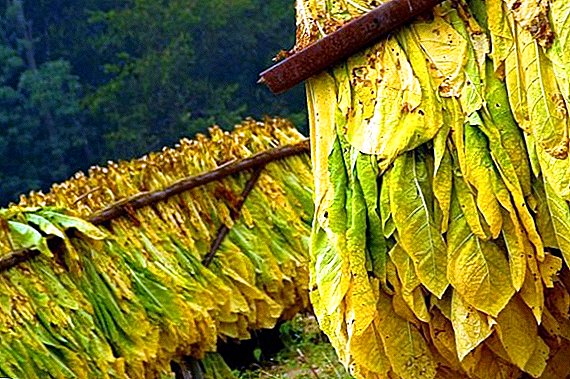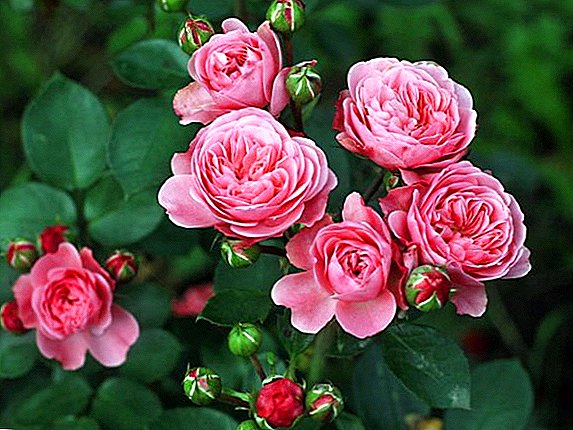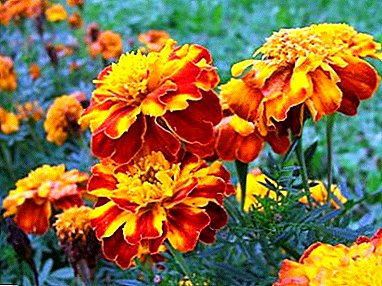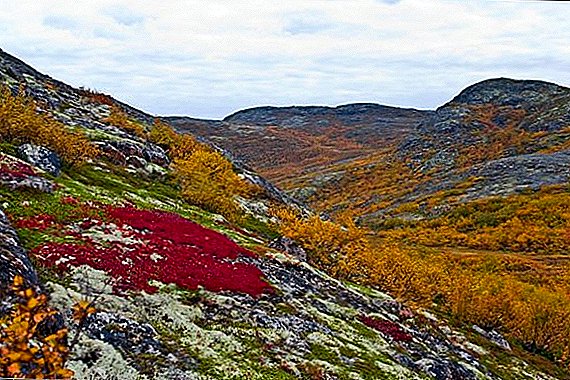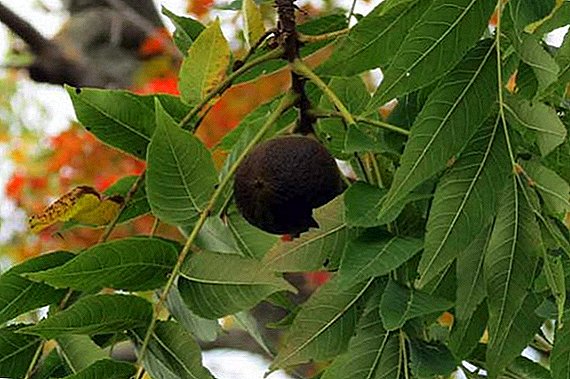 The natural original habitat for black walnut is North America. The indigenous people of these places called black walnut the elixir of life. Local shamans made a serpentine antidote based on the components of this tree, practiced healing and even cast out evil spirits.
The natural original habitat for black walnut is North America. The indigenous people of these places called black walnut the elixir of life. Local shamans made a serpentine antidote based on the components of this tree, practiced healing and even cast out evil spirits.
Description
The black walnut tree was given its name due to the dark brown bark (almost black) and the fruits of almost black shells. The barrel has deep ruts, reaches 40 meters in height and is famous for its dense crown.
The crown is endowed with long, odd-pinnate leaves (up to half a meter long), which, in turn, consist of alternating leaflets (up to 10 cm long and up to 3 cm wide each). The smallest is the unpaired upper leaflet. It may not be.
Leaf color is standard light green, oval-shaped, jagged edges. The tree is characterized by the simultaneous appearance of flowers and leaves, which is a rather unusual phenomenon. And it happens in late April or early May.  Fruits are rough, covered with hairs, green in the form of a ball or pear (up to 5 cm in diameter). Inside the nut has a rounded shape in a hard shell. The kernel of the nut is eaten, the fat content of the kernel is about 60%. The shell is so hard that the use of a hammer is required.
Fruits are rough, covered with hairs, green in the form of a ball or pear (up to 5 cm in diameter). Inside the nut has a rounded shape in a hard shell. The kernel of the nut is eaten, the fat content of the kernel is about 60%. The shell is so hard that the use of a hammer is required.
We recommend you read about the cultivation of black walnut.Wood is appreciated, because it has a solid beautiful structure that is perfectly polished, polished, processed. In addition, it repels parasites, helminths and has good antiseptic qualities due to the presence of glycosides, essential oils, organic acids.
Did you know? The Pharmaceutical Academy of Russia has scientifically confirmed that the leaves, the shell, and the fruits of the black walnut are unique in their healing effects on the body and have no equal.
Composition
For medical purposes, successfully used leaves and fruits. 
The composition of the leaves is unusual and has rarely found qualities.
- Yuglon is the main element in the leaves. Its action is aimed at the destruction of worms and bacteria. That he gives a peculiar smell of iodine.
- Flavonoids are powerful antioxidants. Their work and other polyphenols concluded in the elimination of spasms and relaxation of the muscles of the cardiovascular, digestive and other systems.
- Linolenic acid is an active fat burner. Its action is aimed at splitting fats, reducing cholesterol, restoring the liver. The retina, nerve fibers, the cell membrane are composed of this acid. Palmitic, stearic, oleic, myristic acids are also present.
- Tannins (tannins) - anti-inflammatory components. They are used to protect the mucous membranes from the penetration of infections and damage.
Familiarize yourself with the healing properties of black walnut.
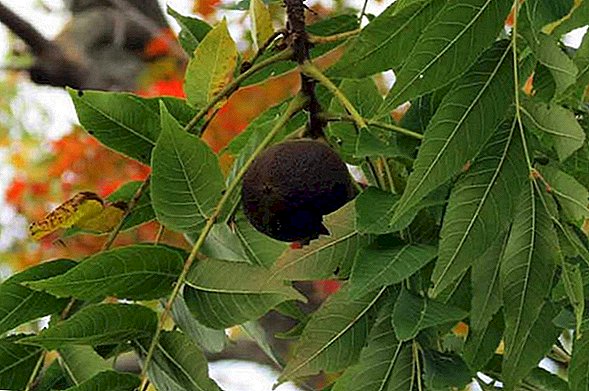
- Calcium is an important participant in the procedure of bone tissue formation and cell growth, monitors the immune system, ensures the normal absorption of nutrients and directs the intracellular processes of the human body. Macroelements potassium, magnesium, phosphorus, sodium are found in smaller doses.
- Trace elements - copper, zinc, iron, selenium, manganese. Minerals participate in the work of the nervous system, direct the metabolic processes, improve hair, nails, teeth, condition of bones, affect hemoglobin.
- Vitamins PP, C, B1, B6, E, A - sources of strength and health, as they organize the vital activity of the whole organism.
Important! Vitamin C in black walnuts is more than in oranges, currants, and lemons.
The leaves are enriched with essential oils, monosaccharides and disaccharides are present. 
Beneficial features
The black walnut leaves have the following beneficial properties:
- Anthelmintic. Exterminates Giardia, pinworms, Ascaris. Intensively affect the helminths of mature and semi-mature stages.
- Antibacterial. Applied in the treatment of diseases of the stomach and intestines. Heals wounds, ulcers, frostbite and other skin lesions.
- Anti-inflammatory. Contribute to the removal of inflammatory processes of different etiologies.
- Laxative. Advise older people with constipation.
- Antioxidant. Normalize the balance of substances in metabolic processes. Used in a comprehensive solution to the problem of excess weight.
- Astringent Accelerate recovery, healing by creating a film that protects the mucous membranes from repeated damage, penetration of harmful microorganisms.
- Antifungal. Participate in the treatment of diseases caused by fungi (as an example - versicolor, psoriasis).
- Immunostimulating. Recommended as an additional tool in the treatment of chronic illnesses and to restore health.

We advise you to read about the benefits of cashew, pecan, hazelnut, hazelnut, macadamia, pistachios, as well as Brazilian, pine, Manchurian and nutmeg.
Application
Drugs only from the leaves of the healing tree and in combination with other components have been used for a long time. In China, asthma, lumbago, and impotence were treated. In ancient Rome, fungal and infectious lesions of the skin tissue were destroyed. In the countries of Asia they successfully got rid of parasites.
In America, recovered after a snake bite, insects. When rubbed, the leaves emit a peculiar odor, indicating the presence of essential oils.
Did you know? Black walnut possesses only its inherent ability to biologically convert one mineral into another. The iodine of this tree is accumulated in this way. Being organic, it is many times more effective than all of us familiar chemical iodine.
Modern and traditional medicine confirm the excellent preventive and curative characteristics of this type of walnut tree. 
Modern therapy successfully counteracts such ailments as:
- respiratory infections, flu, cold;
- bronchitis, tracheitis;
Aloe vera, fennel, propolis tincture, blueblue, Icelandic moss, bergamot, garlic and marsh ledum are also used in the treatment of bronchitis.
- sinusitis and sinusitis;
- intercostal neuralgia;
- gastritis, gastroenterocolitis;
- lichen;
- lymph node tuberculosis;
- intestinal microflora distortion;
- avitaminosis;
- tonsillitis and pharyngolaryngitis;
- acne, eczema, skin tuberculosis, atopic dermatitis.
Here are the most common recipes that you can make yourself.
- Getting rid of worms. A glass of boiling water pour a tablespoon of dried walnut leaves. Filter after cooling. Drink five days on an empty stomach ½ cup of water with drops of infusion according to the scheme. The first - one, the next days - increasing by one drop.
 The sixth day of administration requires adding two teaspoons - up to 68 kg of the patient's weight, two and a half - up to 90 kg, three - with a weight of more than 90 kg. Unpleasant smell weakens when diluted with cinnamon, honey.
The sixth day of administration requires adding two teaspoons - up to 68 kg of the patient's weight, two and a half - up to 90 kg, three - with a weight of more than 90 kg. Unpleasant smell weakens when diluted with cinnamon, honey.In the fight against worms in traditional medicine they also use: canoper grass, silver fox, pumpkin seeds, aspen, birch buds, zucchini and dandelion.
- Mastopathy, cyst, fibroids. Four parts of each leaf nut plant, succession, licorice root, two parts of vervain, one part of elderberry, six parts of goldenrod flowers and six peach to stir. A glass of boiling water sprinkle a tablespoon of the collection. An hour later pass through the gauze. Take 80 ml three times a day before or after meals. The period of use - 10 days. Take a break for five days. You can repeat it again.
- Normalization of the menstrual cycle. ½ liter of boiling water pour 1.5 tablespoons of leaves. After two hours, strain. Before meals three times a day, 30 ml. Consider that the infusion has diuretic properties.
- Mammary cancer. Grind four pieces of dried nut leaves and a piece of nettle. Four tablespoons of the collection stir half a liter of warm honey. Take before meals four times a day. Drink until the drug is emptied.
- Inflammation of the oral cavity. A spoonful of ground leaves cover with a glass of boiling water.
 The infusion will darken. Rinse four times a day until the cessation of pain. Possible use in gynecology for douching.
The infusion will darken. Rinse four times a day until the cessation of pain. Possible use in gynecology for douching. - Therapeutic bath. Cook on a low heat in a liter of water 2 kg of dried leaves. Before taking a bath pour infusion. Ensures improved skin condition.
- Diathesis. 5 g leaves brew in a glass of boiling water. An hour later, the tool is ready. Do twenty-minute lotions on the affected area three times a day until recovery.
Harm and contraindications
Doctors leaves are not allowed:
- allergy sufferers;
- patients in the acute stage of gastric ulcer, cirrhosis of the liver, kidneys;
- women in the state of pregnancy and breastfeeding;
- small children up to two years.
Important! It is desirable to limit the duration of administration of drugs based on nut leaves to three weeks in a row.
The multifaceted healing effect on a person of black walnut (leaves, fruits, roots) significantly exceeds the effect of its relatives and directly depends on the unique composition of its components.



 The sixth day of administration requires adding two teaspoons - up to 68 kg of the patient's weight, two and a half - up to 90 kg, three - with a weight of more than 90 kg. Unpleasant smell weakens when diluted with cinnamon, honey.
The sixth day of administration requires adding two teaspoons - up to 68 kg of the patient's weight, two and a half - up to 90 kg, three - with a weight of more than 90 kg. Unpleasant smell weakens when diluted with cinnamon, honey. The infusion will darken. Rinse four times a day until the cessation of pain. Possible use in gynecology for douching.
The infusion will darken. Rinse four times a day until the cessation of pain. Possible use in gynecology for douching.